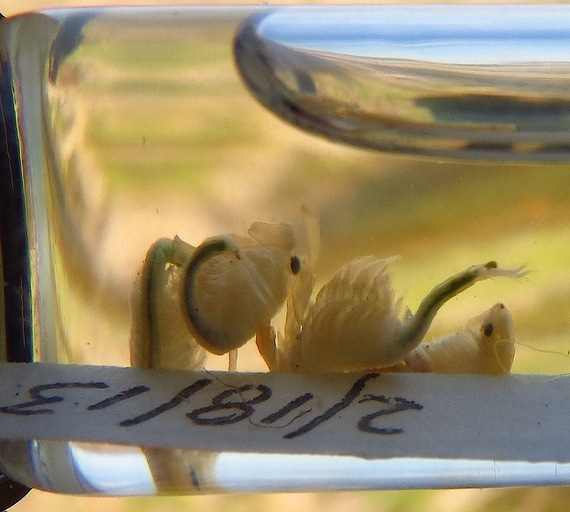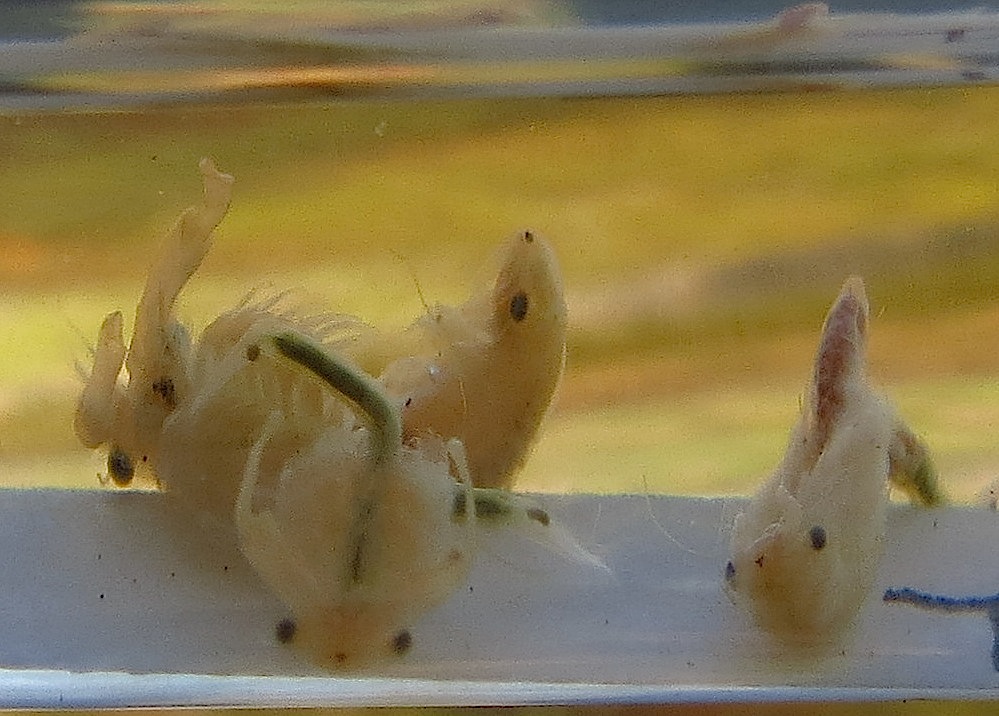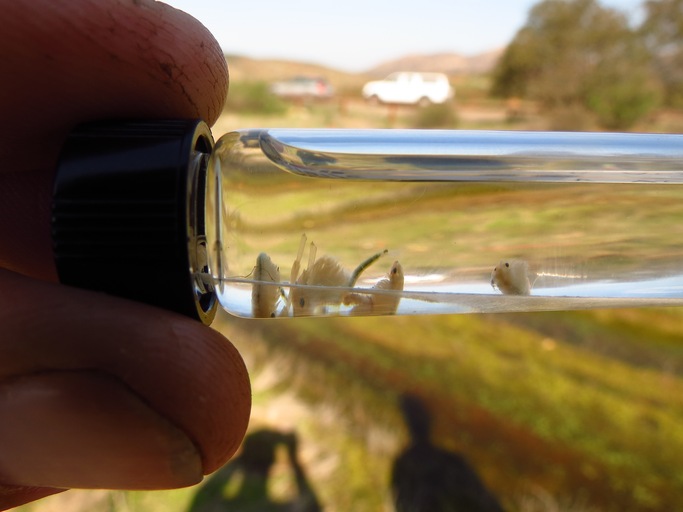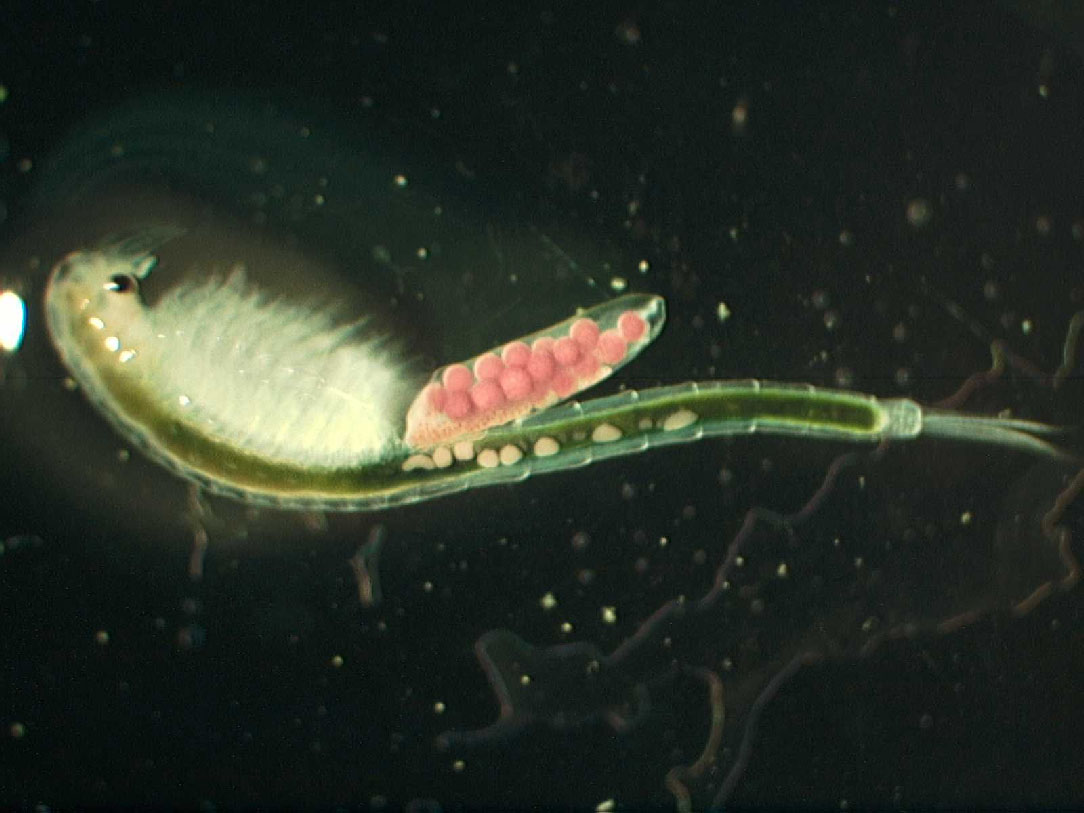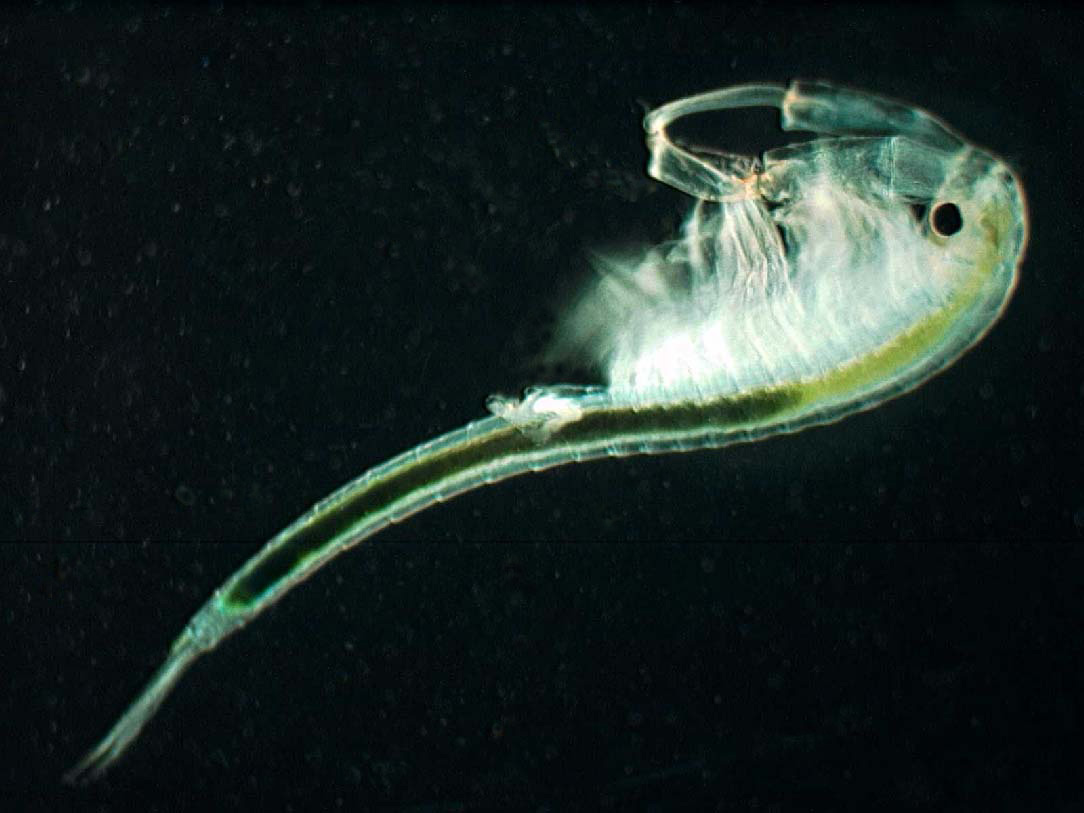Current Distribution Rangewide
Endemic to southern California and restricted to vernal pools and other non-vegetated temporary (i.e., containing water a short time) basins in coastal southern California and northwestern Baja California, Mexico [1].
Known Populations in San Diego County
Within MSPA, San Diego fairy shrimp are known from vernal pools and vernal pools complexes in MU1 (Tijuana Slough NWR, Imperial Beach), MU2 (Kearny Mesa, Chollas Heights), MU3 (Sweetwater Reservoir, Marron Valley, Otay Mesa), MU4 (Mission trails Regional Park, Santee, Poway), MU5 (Ramona), MU6 (Del Mar Mesa, Lopez Ridge, Mira Mesa, Carlsbad, San Marcos) [2]. Also known from vernal pools on MCAS Miramar which supports the largest contiguous block of habitat and highest number of occupied vernal pools within the range of the San Diego fairy shrimp (39 complexes; over 1,899 pools) [1].
List Status
FE [3].
Habitat Affinities
Vernal pool habitat specialists, found in small, shallow vernal pools 5-30 cm (2-12 in) deep with a temperature range of 10-20°C (50-68°F) [3]. They are occasionally found in ditches and road ruts that support suitable conditions [1].
Taxonomy and Genetics
A small freshwater crustacean in the family Branchinectidae, of the Order Anostraca [4]. Described by Michael Fugate in 1993 based on specimens collected on Del Mar Mesa, San Diego County, California [5]. Closely related to Branchinecta lynchi (vernal pool fairy shrimp), a narrow California endemic and a federally threatened species [3,6]. The San Diego fairy shrimp is often misidentified with the versatile fairy shrimp (Branchinecta lindahli), which is native to and commonly found throughout western North America [4]. Genetic studies have found that populations of San Diego fairy shrimp are defined by pool complexes rather than by individual vernal pools which are considered subpopulations [7].
Seasonal Activity
Usually observed from January-March or later in years with early or late rainfall, when seasonal rainfall fills vernal pools [1].
Life History/Reproduction
Has large stalked compound eyes and no carapace (shell covering the back) [8]. They swim upside down using 11 pairs of swimming legs. Mature males can reach 9-16 mm (0.4-0.6 inch) in length, and mature females range in length from 8- 14 mm (0.4-0.5 inch) [4]. Can be distinguished from other Branchinecta fairy shrimp by the shape of the second antenna in the males, or the shape and length of the ventral ovisac in females. They are also distinguished by a of pair of dorsilateral spines [4, 5].San Diego fairy shrimp cysts hatch and mature within 7 to 14 days of rainfall filling a pool, depending on water temperature [9]. Cysts either drop to the pool bottom or remain in the brood sac until the female dies and sinks [1]. Fairy shrimp disappear after about one month [8].
Dispersal
Fairy shrimp disappear after about one month [8]. Only a fraction of the cysts may hatch when pools refill in the same rainy season creating a cyst “bank†in soils with several years of breeding [8, 10]. This partial hatching of cysts helps the San Diego fairy shrimp persist in its seasonal and variable environment [11]. Cysts are capable of withstanding temperature extremes and prolonged drying, but are vulnerable to crushing [8, 12].
Threats
Threatened by habitat loss and degradation due to filling, grading, discing, and leveling, urban and agricultural development, road projects, grazing, off-road vehicle use, trampling, invasion from weedy nonnative plants, trash dumping, soil compaction, erosion, drought, habitat fragmentation and isolation of vernal pool systems and complexes, and alteration of the watershed [3,4]. Destruction of watersheds and disruption of hydrological systems can create further impacts by creating barriers to dispersal, such that reproductive output may be inhibited [13]. The loss and modification of vernal pool habitat continues to be a significant threat to the San Diego fairy shrimp, especially in areas where urbanization is expected to expand [1,13]. Vehicles may negatively affect fairy shrimp by disrupting pool hydrology and chemistry, crushing cysts, displacing adults or cysts to unsuitable locations, or creating conditions favorable for invasion of nonnative plants that degrade pool habitat [12].
Special Considerations:
The ability to develop and maintain cyst banks is vital to the long-term survival of San Diego fairy shrimp populations [14, 15]. Surveys may miss observing and collecting adults, because not all vernal pools fill in a given year, pools may not fill long enough for dormant cysts to hatch, and in any given pool that has ponded water long enough to hatch San Diego fairy shrimp cysts, only a small percentage of the cyst bank hatches (i.e., bet-hedging) [16, 11]. Water chemistry and temperature are important factors in San Diego fairy shrimp populations presence and persistence [10]. San Diego fairy shrimp play an important role in the vernal pool ecosystems they inhabit as they are a food source for waterfowl, other invertebrates, and the sensitive spadefoot toad [4]. Most San Diego fairy shrimp populations are found in San Diego County [11].
Literature Sources
[1] U.S. Fish and Wildlife Service. 2008. Brancinecta sandiegonensis San Diego Fairy Shrimp 5-Year Review: Summary and Evaluation. Carlsbad, CA.
[2] MSP-MOM. 2014. Management Strategic Plan Master Occurrence Matrix. San Diego, CA. Available: http://sdmmp.com/reports_and_products/Reports_Products_MainPage.aspx
[3] U.S. Fish and Wildlife Service. 1997. Determination of Endangered Status for the San Diego Fairy Shrimp. Federal Register 62, No. 22: 4925–4939.
[4] U.S. Fish and Wildlife Service. 1998. Vernal Pools of Southern California Recovery Plan. Portland, OR.
[5] Fugate, M. 1993. Branchinecta sandiegonensis, a new species of fairy shrimp (Crustacea: Anostraca) from western North America. Proceedings of the Biological Society of Washington 106: 296-304.
[6] Simovich, M. A. and M. Fugate 1992. Branchiopod diversity in San Diego County, California. Transactions of the Western section of the Wild/We Society 28: 6-14.
[7] Bohonak, A.J. 2005. Conservation genetics of the endangered fairy shrimp species Branchinecta sandiegonensis. MSCP Vernal Pool Inventory, City of San Diego, CA.
[8] Eriksen, C. and D. Belk. 1999. Fairy Shrimps of California's Puddles, Pools, and Playas. Mad River Press, Inc., Eureka, California.
[9] Hathaway, S.A. and M.A. Simovich, 1996. Factors affecting the distribution and co-occurrence of two southern Californian anostracans (Branchiopoda), Branchinecta sandiegonensis and Streptocephalus woottoni. Journal of Crustacean Biology 16(4): 669-677.
[10] Gonzalez, R.J., J. Drazen, S. Hathaway, B. Bauer, and M. Simovich. 1996. Physiological correlates of water chemistry requirements in fairy shrimps (Anostraca) from southern California. Journal of Crustacean Biology 16: 315-322.
[11] Simovich, M.A. and S.A. Hathaway. 1997. Diversified bet-hedging as a reproductive strategy of some ephemeral pool anostracans. Journal of Crustacean Biology 17: 38-44.
[12] Hathaway, S.A., D.P. Sheehan, and M.A. Simovich. 1996. Vulnerability of branchiopod cysts to crushing. Journal of Crustacean Biology 16(3): 448-452.
[13] Bauder, E.T. 1987. Threats to San Diego Vernal Pools and Case Study in Altered Pool Hydrology. ed. T.S. Elias, 209-213, Conservation and Management of Rare and Endangered Plants. Proceedings from a conference of the California Native Plant Society.
[14] Ripley, B.J., J.H. Holtz, and M.A. Simovich. 2004. Cyst bank life-history model for a fairy shrimp from ephemeral ponds. Freshwater Biology 49: 221-231.
[15] Simovich, M.A. 2005. Considerations for the Management of Vernal Pool Faunal Communities. U.S. Department of Agriculture, Forest Service General Technical Report PSW-GTR-195.
[16] Philippi, T.E., M.A. Simovich, E.T. Bauder, and J.A. Moorad. 2001. Habitat ephemerality and hatching fractions of a diapausing anostracan (Crustacea: Branchiopoda). Israel Journal of Zoology 47: 387-395.
